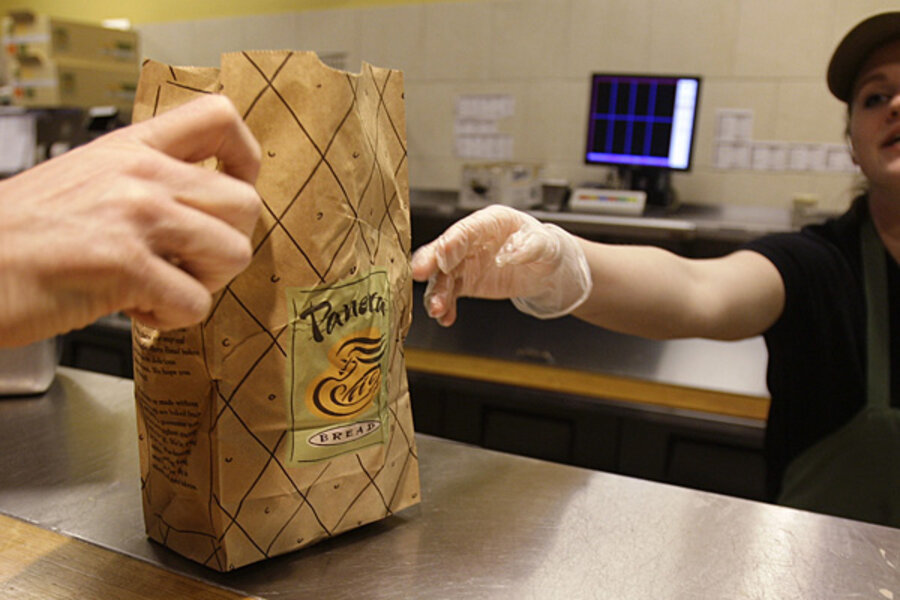Panera Bread will remove all additives from its menu by 2016. Take that, Subway.
Loading...
Until now, the food industry’s response to growing public clamor over unnatural chemicals in its food has been incremental: A bread additive removed here, a dye in a sports drink replaced there. Panera, on the other hand, is going big where others have gone small.
The restaurant-café chain will remove all artificial additives from its menu by 2016, the company announced Tuesday. That means no dyes, no preservatives, and no artificial sweeteners in any Panera restaurant-café offerings.
“We believe simpler is better,” Scott Davis, chief concept officer, said in the statement announcing the changes. “Panera is on a mission to help fix a broken food system. We have a long journey ahead, but we’re working closely with the nutrition community, industry experts, farmers, suppliers and others to make a difference.”
Panera also released a list of menu items that will have additives removed, including:
Deli smoked turkey: potassium lactate, sodium phosphate, sodium erythorbate, sodium nitrite, and sodium diacetate.
Horseradish: calcium disodium EDTA
Citrus Pepper Chicken: maltodextrin, potassium lactate
Cilantro Jalapeño Hummus: ascorbic acid and tocopherol, tara gum, carrageenan, potassium sorbate, and sodium benzoate
Summer corn chowder: tapioca Dextrin, modified corn starch, autolyzed yeast extract, maltodextrin, coconut oil derived from triglycerides, artificial flavors
Roast beef: caramel color
“Some items may disappear, but what is more likely to happen is for items to be reformulated,” Kate Antonacci, Panera’s director of societal impact initiatives, writes the Monitor via e-mail.
Panera has made being at the forefront of food industry changes central to its brand in recent years, perhaps sensing an increased public awareness and concern about what goes into a meal. It was among the first restaurants to post calorie counts on its menus, well before doing so became mandatory for large, national chains.
Today’s additives announcement was part of a larger “food policy” released by the chain, which outlines its commitment to an array of causes that food activists and conscientious eaters hold dear, including meat raised without antibiotics and sustainable fishing and farming.
Panera’s additive purge is just the latest move in an arms race among food companies, especially quick-service restaurants, to convince an ingredient-conscious public that they have their best interests at heart. Subway recently removed a controversial preservative from its sandwich bread, a move it broadcast loudly in national TV commercials. Chick-fil-A made a series of highly publicized menu tweaks early this year, removing artificial dyes from some of its dipping sauces and committing to a switch to antibiotic-free chicken within the next five years.
Panera going whole hog in the additive issue and combining it with an overarching menu philosophy makes those smaller moves look, well, small. “We’ve never been about one-off reactionary changes,” Ms. Antonacci writes. “Rather, for decades, we have worked to provide our customers with food they can trust and transparency that allows them to make choices.”
It puts Panera more in line with Chipotle, which advertises its use of “naturally raised” pork, and a commitment to have its menu free of genetically modified organisms (GMOs) “to the fullest extent possible," in CEO Steve Ells’s words.






